
NPS Image Because of its impressive size and remarkable preservation, it is easy to forget that the Castle is almost 900 years old. Because of its age, the Castle requires special attention to protect and maintain the original fabric remaining in the structure. Even with all the looting in the early 20th century, artifacts such as potsherds, corncobs and gourd fragments are still present. Occassionally, the Castle undergoes stabilization work with a concerted effort to preserve all original material, such as adobe plaster with imprinted fingerprints. The first such work took place in 1933 under the direction of the monument's "custodian", Ranger Martin Jackson. This restoration repaired much of the damage caused by looters, including the hole created after several pot hunters used dynamite to expose a hard-to-reach section of the Castle. This was also when many of the modern ladders, walkways and safety railings were installed to improve visitor access to the structure. 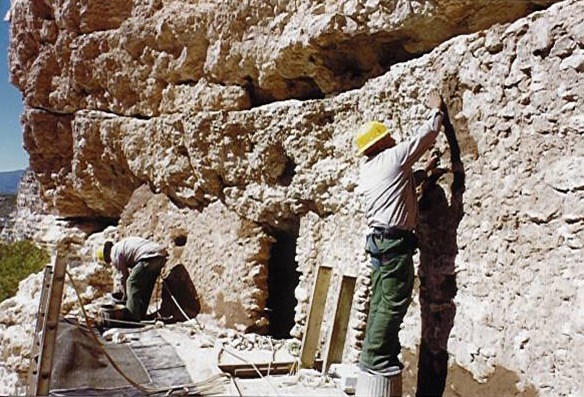
NPS Image The next major restoration and stabilization effort didn't take place until the mid-1990's, this time to repair severe damage caused by an infestation of carpenter bees which had bored holes into the original plaster. Nearly sixty years of archeological research and restoration around the country led to some significant changes in how the National Park Service went about things. For instance, not only were local materials used to create the adobe plaster, it was painstakingly applied by hand, the same way the Sinagua may have done it. 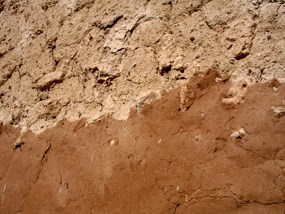
NPS Photo by Paul Ollig With every restoration effort to any archeological site, efforts are made to make the restored area as authentic-looking as possible. This is accomplished using similar materials and methods as in the original construction. However, in order to preserve the integrity and scientific value of the site, any new construction needs to be distinguishable by a trained observer from any original work. 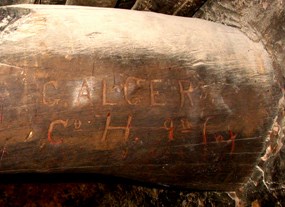
NPS Photo by Paul Ollig Damage isn't limited to the exterior of the Castle. The sheer numbers of people allowed inside both before and after it became a national monument affected the integrity of the structure itself. It also provided an opportunity for vandals to leave their mark behind. Many of the main support beams inside the Castle are covered in graffiti, some of it dating to the late 1800's. Some of the most prolific vandals were soldiers from Fort Verde, who frequently visited the Castle when off duty, either hunting for souveniers or enjoying a picnic with their families. An experience not unlike what most visitors today experience. Fortunately, we now have a bookstore where souveniers may be purchased, which significantly reduces the amount of theft from the Monument. 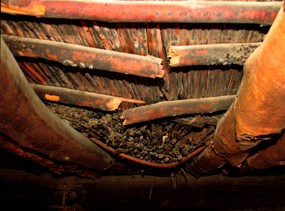
NPS Image Unfortunately, the Castle is still susceptible to damage. Original wood beams and plaster floors are particularly vulnerable. Wooden support beams often splinter from the weight of the floor above, endangering the structural integrity of the Castle itself. Today, a project is being undertaken to document every square inch of the Castle using a high-definition laser scanning device, called LIDAR. Upon the completion of this project, a three-dimensional high-definition model of the Castle will enable park managers to examine the structure inside and out, millimeter by millimeter. The resulting data will enable archeologists to learn even more about how it was built, and perhaps give us better insight into how people lived in this incredible building. 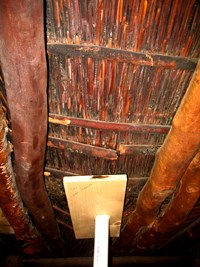
NPS Photo by Paul Ollig In the meantime, temporary solutions have been implemented to prevent further damage to the Castle as we wait for more permanent restorations work to be done. Ultimately, though, it is up to all of us to ensure that Montezuma Castle continues to be preserved in perpetuity for the enjoyment of this and future generations. |
Last updated: December 5, 2023
